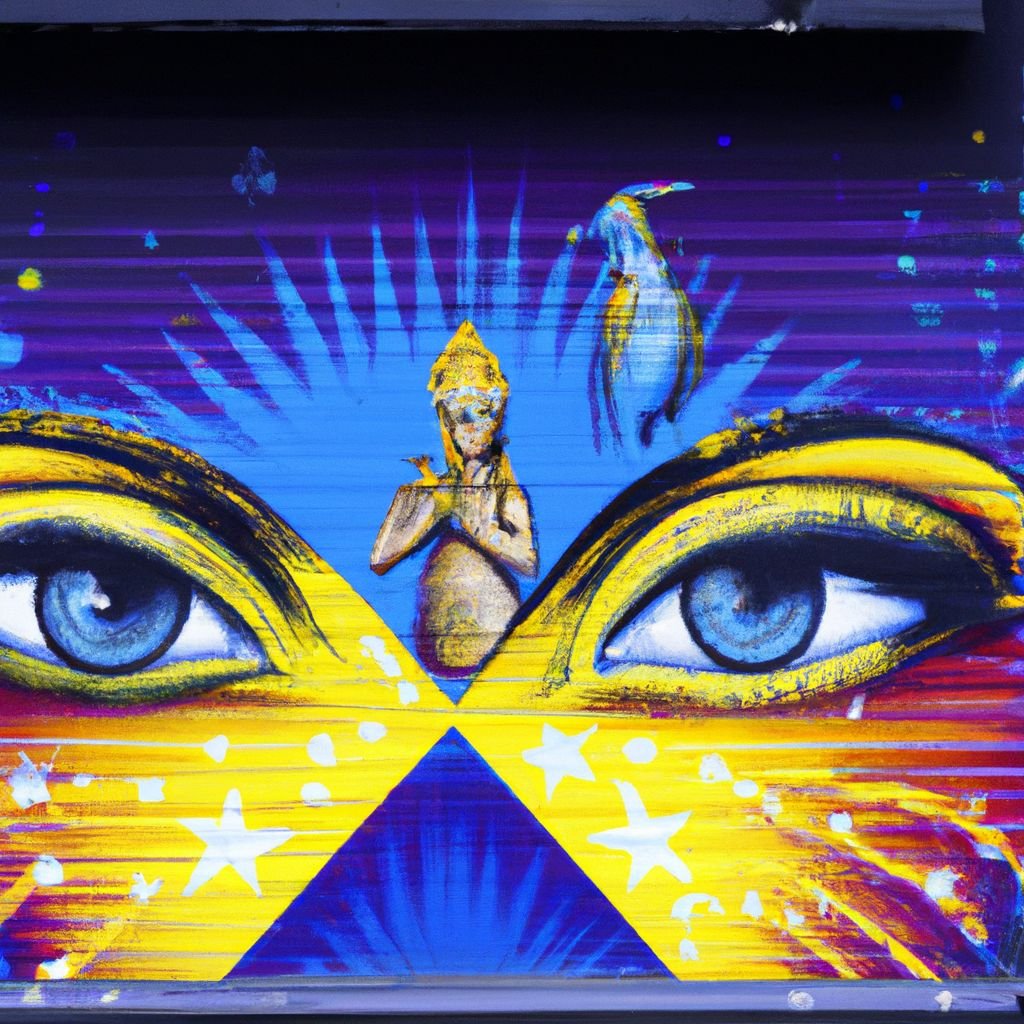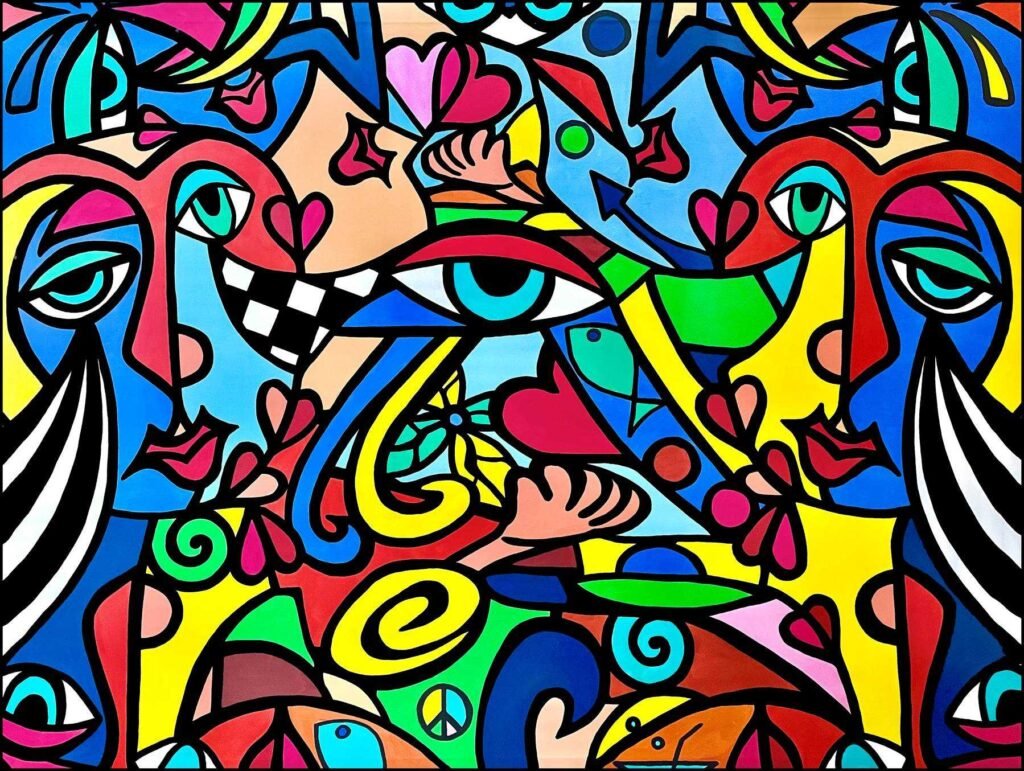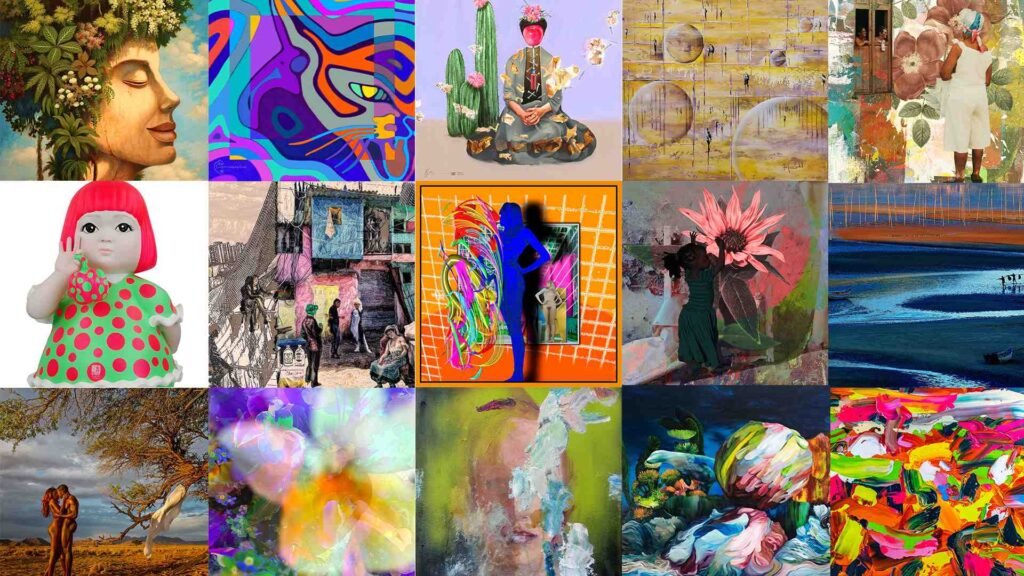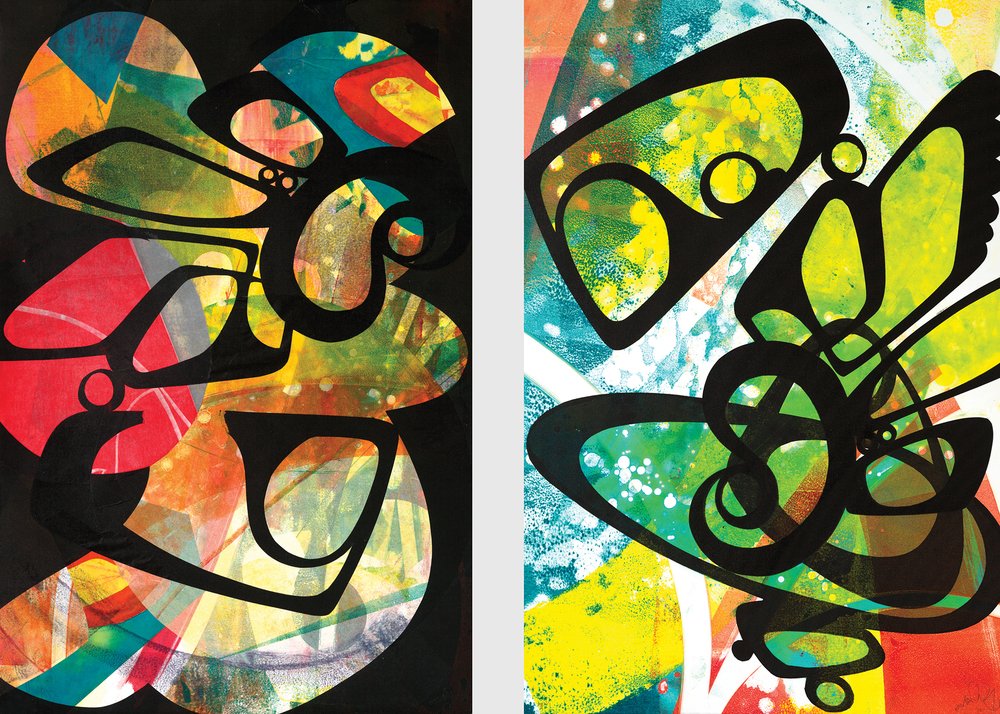Art has always played a powerful role in shaping cultural trends. From ancient cave paintings to contemporary street art, the visual medium has the ability to ignite emotions, challenge perspectives, and inspire societal change. In today’s digital age, art prints have emerged as a popular and accessible form of artistic expression, allowing individuals to decorate their living spaces with pieces that resonate with them. However, art prints have also taken on a much larger significance. They have become a tool for cultural influence, serving as catalysts for conversations, reflections, and ultimately, the progression of society. In this article, we will explore how art prints can influence and shape cultural trends, highlighting the ways in which they spark dialogue, redefine norms, and bridge diverse perspectives. Get ready to discover the transformative power of art prints and their impact on our ever-evolving societal fabric.
The Power of Art Prints as Cultural Artifacts
How art prints serve as cultural documentation
Art prints are not merely decorative pieces; they hold immense power as cultural artifacts. They provide a tangible representation of a specific time in history and serve as valuable documentation of cultural practices, beliefs, and traditions. Unlike other forms of art, such as paintings or sculptures, art prints can be mass-produced, making them accessible to a wider audience. This accessibility allows art prints to capture and preserve cultural moments that might have otherwise been lost or forgotten. From religious rituals to everyday life, art prints offer a window into the diverse tapestry of human experience.
The progression of influences over time
Art prints have also played a significant role in tracing the progression of influences over time. They provide a visual record of the evolution of cultural practices and artistic styles. Through art prints, we can witness the interplay between different cultures and how they have influenced one another. Whether it is the fusion of Eastern and Western art styles or the incorporation of various artistic techniques, art prints offer a visual narrative of the constantly evolving cultural landscape.
Preservation and transmission of cultural identity through art prints
Art prints serve as powerful tools for the preservation and transmission of cultural identity. They allow cultures to pass down their traditions, stories, and values from one generation to the next. Through art prints, cultural symbols, mythologies, and historical events can be preserved and shared with a wider audience. Art prints can reinforce cultural pride and help communities maintain a sense of identity in an ever-changing world. Moreover, art prints can act as a bridge between different cultures, fostering understanding and appreciation of diverse cultural perspectives.
Evolution of Art Prints and its Socio-cultural Impact
The history and development of printmaking
Printmaking, the process of creating multiple reproductions of an image, has a long and rich history. It dates back to ancient times when woodblock printing was prevalent in East Asia. Over the centuries, printmaking techniques evolved, with the introduction of techniques such as intaglio, lithography, and screen printing. These advancements allowed for greater detail and complexity in art prints, further enhancing their socio-cultural impact.
Socio-cultural themes in printmaking
Printmaking has always been intertwined with socio-cultural themes. From religious and mythological narratives to political and social commentary, art prints have been used as a medium for exploring and critiquing various aspects of society. They have served as a platform for artists to express their thoughts and engage with pressing issues, reflecting the attitudes and values of the time. Art prints have encapsulated the cultural zeitgeist, shedding light on the prevailing socio-political climate and acting as agents of change.
Impact of technological advancements on print art
Technological advancements have significantly impacted the art of printmaking. With the advent of digital printing techniques, artists now have more creative freedom and flexibility. Digital art prints allow for precise color reproduction and the ability to experiment with different textures and effects. Moreover, digital prints can be easily shared and disseminated through online platforms and social media, amplifying their reach and impact. The intersection of technology and art prints has opened up new possibilities for artists and has had a profound influence on the socio-cultural landscape.

Art Prints and Cultural Representation
Depiction of cultural diversity in art prints
Art prints have the power to depict and celebrate the rich diversity of cultures around the world. Artists have used art prints as a medium to represent various cultural traditions, customs, and identities. Through vibrant colors, intricate patterns, and symbolic imagery, art prints capture the essence of different cultures, allowing for cross-cultural understanding and appreciation. They challenge stereotypes and showcase the beauty and complexity of diverse cultural experiences.
The power of representation: minorities and marginalized groups in print art
Art prints have been instrumental in giving voice to minorities and marginalized groups. They provide a platform for underrepresented voices to be heard and their stories to be shared. Art prints depicting the struggles, achievements, and resilience of marginalized communities not only raise awareness but also empower individuals within these communities. By offering visibility and representation, art prints play a crucial role in challenging societal norms and advocating for social justice.
Celebrations of cultural heritage through art prints
Art prints offer a means to celebrate and honor cultural heritage. They allow artists to convey the depth and significance of their cultural traditions and history. Through art prints, cultural celebrations, festivals, and rituals can be shared with a global audience, fostering appreciation and understanding. Art prints serve as reminders of the importance of cultural heritage and invite viewers to engage with and learn from diverse cultural practices.
Influence of Iconic Art Prints on Pop Culture
Famous art prints that influenced pop culture
Certain art prints have transcended their original context and become iconic symbols of pop culture. From Andy Warhol’s vibrant and mass-produced prints of Marilyn Monroe to Salvador Dali’s surreal and thought-provoking artworks, these prints have captured the public’s imagination and become widely recognizable images. The Mona Lisa, The Scream, and Starry Night are a few examples of art prints that have become iconic in popular culture.
How pop culture responded and reflected on these works
Pop culture has responded to these iconic art prints by incorporating them into various mediums, including music, film, fashion, and advertising. The influence of these prints can be seen in album covers, movie posters, fashion collections, and commercials. Pop culture often seeks inspiration from these recognizable prints, using them as a way to connect with audiences and evoke a sense of familiarity and nostalgia.
Case studies: Art prints that became cultural icons
Art prints such as Shepard Fairey’s “Hope” poster featuring Barack Obama or Banksy’s politically charged prints have become powerful symbols of social and political movements. These prints have resonated with the public and have been used to convey messages of hope, protest, and societal critique. They have become cultural icons, representing the collective aspirations and concerns of a generation.

Art Prints as Mediums of Political Expression
Artistic response to political events
Art prints have long been a tool for political expression, allowing artists to respond to political events and injustices. They serve as a platform for artists to question authority, challenge oppressive systems, and highlight social issues. Art prints can be powerful vehicles for protest and resistance, offering a visual language that speaks directly to the emotions and values of the viewer.
Influence of art prints on political movements
Art prints have played a significant role in shaping political movements by mobilizing communities and inspiring social change. Prints have been used to spread messages, rally support, and generate awareness for various causes. Whether it is through powerful imagery, provocative slogans, or evocative symbolism, art prints can spark conversations, unite like-minded individuals, and galvanize action.
Transmission and propagation of political ideologies through art
Art prints have the unique ability to transmit and propagate political ideologies. By disseminating prints through various mediums such as posters, flyers, and digital platforms, activists can reach a wider audience and amplify their message. By visually representing political ideologies, art prints become potent tools for persuasion, encouraging individuals to reflect on and engage with socio-political issues.
Fashion Industry’s Interplay with Art Prints
Integration of art prints in clothing designs
The fashion industry has long found inspiration in art prints, incorporating them into clothing designs. High-end fashion houses and independent designers alike have collaborated with artists or licensed iconic art prints to create unique and visually striking collections. Art prints on garments provide a canvas for personal expression and blur the boundaries between fashion and art.
Influence of art prints on fashion trends
Art prints have had a significant influence on fashion trends, shaping the aesthetics and motifs that dominate the industry. From the bold and geometric patterns of the Art Deco movement to the vibrant and abstract prints of the Pop Art era, art prints have been instrumental in defining fashion styles. The incorporation of art prints in fashion allows individuals to wear their appreciation for art, transforming the human body into a living canvas.
Impact of the fashion industry’s interpretation of art prints on society
The fashion industry’s interpretation of art prints has a profound impact on society. It shapes trends, consumer preferences, and even societal norms. Fashion designers have the power to elevate lesser-known artists or cultural traditions through their creations, bringing attention and recognition to marginalized voices. However, there is also a responsibility to ensure ethical collaborations and respectful representation to avoid cultural appropriation or exploitation.

The Role of Digital Art Prints in Modern Culture
Rise of digital art prints
The advent of digital technology has revolutionized the art world, including the production and distribution of art prints. Digital art prints offer new possibilities for artists, enabling them to experiment with techniques, colors, and forms that were previously inaccessible. Digital platforms and online galleries have also made art prints more accessible to a global audience, breaking down geographical barriers and reaching individuals who may not have had access to traditional art spaces.
Impacts of social media and internet on the acceptability of digital prints
The rise of social media and the internet has greatly influenced the acceptability and popularity of digital prints. Platforms such as Instagram, Pinterest, and online art marketplaces have become spaces for artists to showcase and sell their digital prints. This increased visibility and accessibility have contributed to the growing acceptance and appreciation of digital art prints as a legitimate medium in contemporary culture.
Digital prints as an accessible medium for cultural expression
Digital art prints offer a highly accessible medium for cultural expression. They allow artists from diverse backgrounds to share their stories, perspectives, and cultural heritage with a global audience. Digital printing techniques offer the flexibility to explore and experiment with various styles, merging traditional techniques with digital tools. This fusion of old and new techniques contributes to the evolution and preservation of cultural expression in the digital age.
Art Prints and Cultural Appropriation
Issues of cultural appropriation in art prints
The issue of cultural appropriation in art prints is one that must be approached with sensitivity and respect. Cultural appropriation occurs when elements of a culture are borrowed or used without consent, often leading to the exploitation or commodification of culturally significant symbols, practices, or artifacts. It is essential to distinguish between appreciation and appropriation, ensuring that art prints honor and represent cultural diversity without perpetuating harmful stereotypes or diluting sacred traditions.
Impact of cultural appropriation on the arts and society
Cultural appropriation in art prints can have significant negative impacts on both the arts and society. It can perpetuate stereotypes, erase cultural authenticity, and trivialize sacred practices. Appropriation can undermine the voices and experiences of marginalized communities, reinforcing power imbalances and contributing to cultural erasure. It is crucial to value cultural exchange, collaboration, and respectful representation in art prints to foster a more inclusive and equitable artistic landscape.
Ways of respectful representation and appreciation
Respectful representation and appreciation in art prints require collaboration, education, and dialogue. Artists should seek permission, engage with cultural experts, and ensure fair compensation when using elements from a culture that is not their own. They should also take the time to understand the historical and cultural significance behind the symbols they incorporate and avoid reducing them to mere aesthetics. By acknowledging and respecting cultural origins, artists can create art prints that celebrate diversity and promote cultural understanding.

Art Prints in Commercial Spaces and its Cultural Influence
Inclusion of art prints in branding and advertisements
Art prints have permeated commercial spaces, appearing in branding and advertising campaigns. Companies recognize the power of art prints to captivate and engage consumers, utilizing them to convey brand values, tell stories, and create emotional connections. By incorporating art prints into their marketing strategies, brands can tap into cultural symbols, art movements, or iconic prints to appeal to the interests and aspirations of their target audience.
How art prints reflect and shape consumer culture
Art prints reflect and shape consumer culture by influencing consumer preferences, trends, and purchasing decisions. The presence of art prints in commercial spaces, whether in fashion stores, restaurants, or hotels, contributes to creating a particular ambiance and aesthetic that resonates with consumers. The popularity of art-inspired merchandise, from clothing to home décor, underscores the influence of art prints on consumer culture, blurring the lines between art and commercialism.
Impact of commercialism on the meaning and value of art prints
The commercialization of art prints has sparked debates concerning the meaning and value of art. Critics argue that the mass production and commodification of art prints dilute their artistic integrity and cultural significance. However, there is also the argument that the commercialization of art prints allows for greater accessibility and exposure, generating interest and support for artists. It is essential to strike a balance that respects the artistic merit of art prints while acknowledging the realities of a commercialized art market.
Art Prints and the Shift in Aesthetics Across Cultures
Reflection of cultural aesthetics in art prints
Art prints provide a platform for the reflection and expression of cultural aesthetics. From Renaissance masterpieces to contemporary prints, each carries distinct characteristics and visual languages that mirror the cultural aesthetics of the time and place of their creation. Art prints can showcase the use of color, composition, symbolism, and motifs unique to a particular culture, offering insights into its values, beliefs, and artistic sensibilities.
The influence of changing aesthetics on print art
Changing aesthetics across cultures have a direct influence on the evolution of print art. As societal tastes and preferences shift, artists adapt their artistic approaches and techniques to reflect these changes. Print art has the ability to embrace and respond to emerging artistic movements, incorporating new techniques, styles, and visual narratives. The evolution of aesthetics within print art helps shape the overall artistic landscape and opens doors to new possibilities.
The role of print art in establishing and popularizing new aesthetics
Print art has historically played a crucial role in establishing and popularizing new aesthetics. From Impressionism to Street Art, art prints have acted as catalysts for artistic movements, challenging conventional norms and introducing groundbreaking styles. By disseminating prints, artists have been able to reach wider audiences, fostering recognition and appreciation for previously unexplored aesthetics. Print art acts as a platform for experimentation, innovation, and the continued evolution of cultural aesthetics.
Art prints have demonstrated their power as cultural artifacts, serving as documentation, representations, and catalysts for change. They have captured the essence of diverse cultures, facilitated cross-cultural understanding, and exerted influence on various facets of society. Whether as tools for political expression, mediums for fashion and brand communication, or reflections of changing aesthetics, art prints continue to shape and influence cultural trends. Through an appreciation of art prints, we can celebrate the depth and richness of human creativity and cultural heritage.


